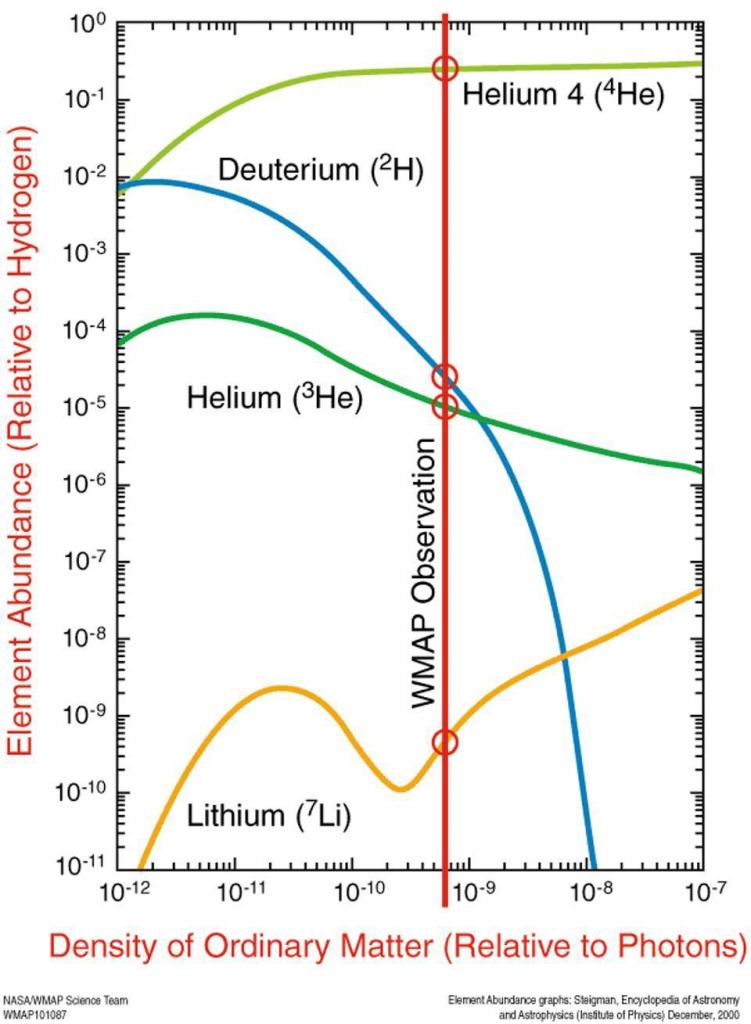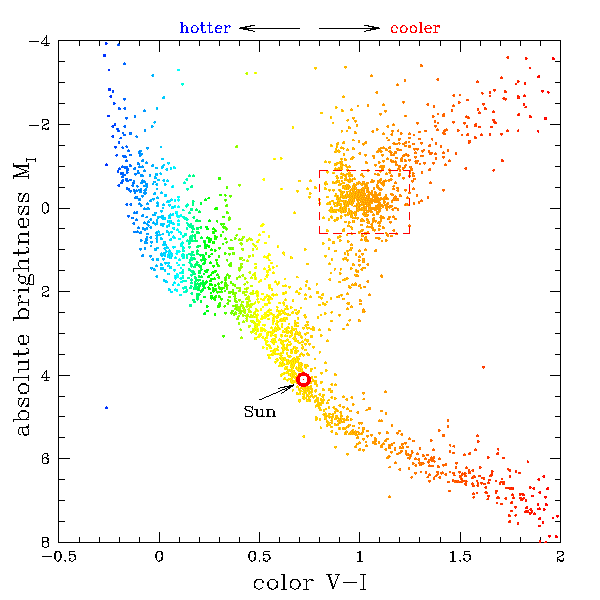In the beginning, the big bang created three elements: hydrogen, helium, and lithium. But it only produced a trace of lithium. For every lithium atom created, the big bang produced about 10 billion hydrogen atoms, and 3 billion helium atoms. The ratio of primordial elements is one of the triumphs of the big bang model. It predicts the ratio of hydrogen (H) and helium (4He) perfectly, and even works for the ratios of other isotopes, such as deuterium (2H) and helium-3 (3He). But it doesn’t work for lithium, and we aren’t sure why.

According to theory, the big bang should have produced much more lithium (7Li) than we observe. The level of observed lithium is so much lower than predicted that it is known as the lithium problem. Part of this is understandable. We know, for example, that stars consume lithium in the process of fusing heavier elements in their core. Also, since lithium can be difficult to observe, there may be some systematic error in our measurements that is underestimating cosmic lithium.
There is, however, another snag in the model. While the observed level of 7Li is lower than expected, the observed level of another lithium isotope, 6Li, is too high. This isotope makes up about 8% of naturally occurring Lithium, while the big bang theory predicts it should comprise less than 1%. It’s this last bit that is the most perplexing since it implies that lithium is being created, not just burned. But a new study of red giant stars may have the answer.

The lithium abundance of most stars is fairly low, and since the standard fusion process of a star depletes lithium, that abundance tends to decrease as a star ages. But some stars contain lots of lithium. Known as lithium-rich giants, these red giant stars have an abundance a thousand times higher than other giant stars. This would imply that these stars are creating lithium through some nuclear process.
But lithium-rich giants only make up about 1% of red giant stars. Other than their high lithium abundance, they are similar in age, mass, and brightness to other red giants. What could trigger some red giants to produce lithium, but not all of them?

To answer this question, the team looked at 200,000 red giant stars with similar mass and overall metallicity. Other than their lithium abundance, these stars were basically the same. They then sorted the stars into regular red-giant stars and red clump giants. They are called red clump stars because they all have a similar brightness and color, so they are clumped together on a Hertzsprung-Russell diagram. Red giant stars move into a red clump phase as they transition from fusing hydrogen to fusing helium.
When they measured the lithium abundance of these stars, the team found that regular red giants had lower lithium levels, just as you would expect. But the red clump stars had higher levels of lithium. So it would seem that as red giants become red clumps, they create much of the lithium we see today.
In about five billion years, our Sun will become a red giant. In time, it will also become a red clump star. When it does, it will add a bit of lithium to the cosmos.
Reference: Kumar, Yerra Bharat, et al. “Discovery of ubiquitous lithium production in low-mass stars.” Nature Astronomy (2020): 1-5.


„All nebulae observed in the Milky Way Galaxy .. Their chemical composition, however, is fairly uniform; it corresponds to the composition of the universe in general in that approximately 90 percent of the constituent atoms are hydrogen and nearly all the rest are helium, with oxygen, carbon, neon, nitrogen, and the other elements together making up about two atoms per thousand.“ https://www.britannica.com/science/nebula
Sun: Photospheric composition (by mass)
Hydrogen……73.46%
Helium ………24.85%
Oxygen………..0.77%
Carbon ……….0.29%
Iron ……………0.16%
Neon ………….0.12%
Nitrogen …….0.09%
Silicon ………..0.07%
Magnesium ..0.05%
Sulfur ………..0.04%
The evidence “confirms” the credibility of the article.